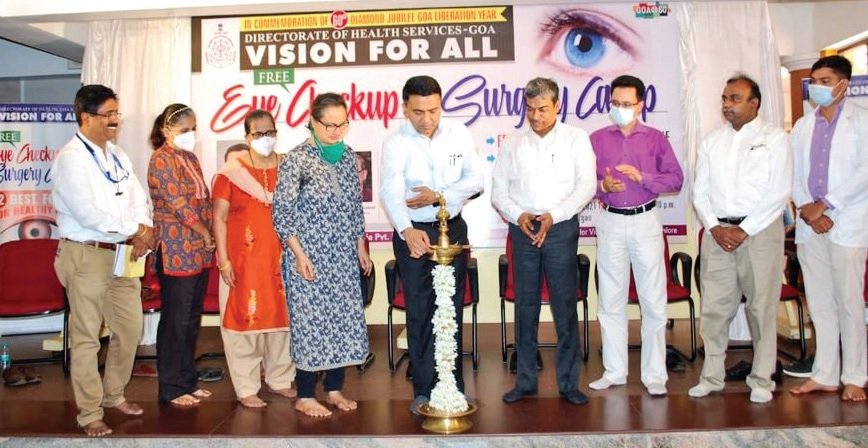WORLD LEGACY
Saving Heritage For Posterity
Under the government of India’s ‘Adopt a Heritage’ Scheme for better upkeep of heritage buildings by corporate houses, it was decided that of Delhi’s Red Fort built by Shah Jahan—the Mughal emperor – would be taken care of by Dalmia Bharat Ltd. There is a long list of such heritage building that the government wants to give them to corporate houses for maintenance. Corporate sector will be tasked with overseeing the management of long-neglected historical buildings as ‘monument mitras’ (friends of monuments). Four memorandum of understandings (MoUs) have already been signed under the scheme. Mount Stok Kangri Trek Route, Ladakh, Gangotri Temple Area and Trail to Gaumukh, Uttarakhand, Red Fort, Delhi and Gandikota Fort, Andhra Pradesh have been adopted to begin with. Six more are expected to be signed anytime soon. Around 31 more monuments have been enlisted for coverage under the scheme including Mughal emperor Akbar’s one time capital Fatehpur Sikri to the Chand Baori (step well) in Rajasthan. The objective is to make these poorly maintained historic sites tourist-friendly by getting these companies to invest in infrastructure as part of their corporate social responsibility (CSR) programmes. Building functioning toilets, Wi Fi facilities and proper signage will be minimum facilities among other things that these companies would be provided by adopting heritage site besides operating museums, shops, and cafes in lieu of featuring their brand names on souvenirs and signs. Dalmia Group will also construct, landscape, illuminate and maintain activities related to provision and development of tourist amenities. It will build basic infrastructure around it and has committed a sum of Rs. 25 crore for the purpose over a period spanning five years. Unavailability of these facilities tells a lot about heritage conservation in India with even basic amenities missing at even the most visited monuments.
The decision was criticized and applauded at the same time as Dalmia Bharat, a conglomerate best known for its sugar and power businesses, getting involved in the upkeep of iconic structures of India. Many of them are of the view that the government is handing over history to private companies with no experience or accountability. The Red Fort, built in the 17th century by the Mughal emperor Shah Jahan, was the country’s political centre — though only symbolic by the mid-1850s. Since India gained independence from the British in 1947, every successive Prime Minister has hoisted the national flag at the Red Fort on August 15. So the fact that this important site is among the first to be put in the hands of the private sector has caused concern. But there are many such historical monuments whether Lincoln Memorial in America or Stonehenge or West minister Abbey in Britain managed by private players.
Union Minister of State (independent charge) for Tourism Alphons Kannanthanam said, “The whole idea behind this is that iconic sites which attract tourists in big numbers, and these are India’s pride. So I think we need to start with the big things and sort out those monuments first.” But critics have pointed out problems with the scheme. For one thing, the deal between the government and the Dalmia Bharat Group includes an indemnity clause that could protect the latter even if it damages any part of the ancient structure. The deal also allows the Dalmia name to be featured on souvenirs, banners, and signs across the Red Fort. Though the Archaeological Survey of India (ASI), the arm of the ministry of culture tasked with conserving monuments, does have approval rights, many are concerned about whether the signs will be discreet and tasteful. However, the ASI will remain in control of the monument and all changes will require its permission.
The ASI has been of the view that maintenance and conservation are two different things. Providing facilities inside the monuments is one thing and protecting it from getting dilapidating other thing and conservation part the ASI wants to keep with itself as its experience with Agha Khan Trust in conservation had not been good that used such materials in conservation that were not originally used. So the apprehension about addressing the pressing problems of conservation and restoration is not much to be bothered about. ASI has never been happy with the conservation work of Agha Khan Trust and Indian National Trust for Art and Cultural Heritage (INTACH) and stopped several works by them in the midway. So such apprehension must not come up. No one can deny the fact that after 70 years of independence, nothing else has worked to improve the basic experience of visiting India’s heritage sites. ASI has been facing financial scarcity. But it will certainly not abdicate control over these monuments. There will have to be an overall overseeing of this whole operation, and such mechanism is within the project as monuments are still owned by the ASI.
There is also a precedent of private companies with no conservation experience successfully reviving heritage sites. A few years ago, Italy was embroiled in a similar national debate after the government allowed corporate players to step in to rescue iconic monuments such as Rome’s Trevi Fountain and the Colosseum, which were facing damage and discolouration. The designer brands Fendi, Tod’s, and Bulgari went on to spend millions of euros on months-long restoration projects. The ASI is supposed to maintain and protect 3,678 national monuments. This includes famous temples, mosques, forts, churches, mausoleum and many other such monuments that have been places of worship. Construction is banned within 100 metres of national monuments. The government has waived this restriction for public works (highways bridges, railways lines). A few years ago, the Comptroller and Auditor General of India (CAG) audited 1,655 of the 3,678 protected ASI monuments. It found that as many as 92 were missing! The ASI says many sites have been encroached on and even built over. Some statues and artefacts listed as monuments have been stolen. The government admitted that it couldn’t trace 24 monuments across the country. Of these, 11 monuments are in Uttar Pradesh, two each in Haryana, Delhi, Maharashtra, and Rajasthan, while one each in Assam, Arunachal Pradesh, Uttarakhand, Madhya Pradesh and West Bengal. Entire Jamia Nagar and Batla House colonies in South Delhi are settled on Jogabai mound – the missing archaeological site.


































